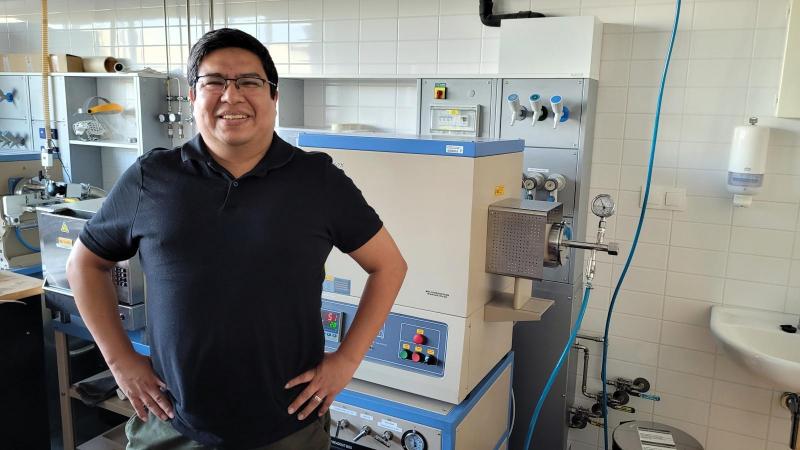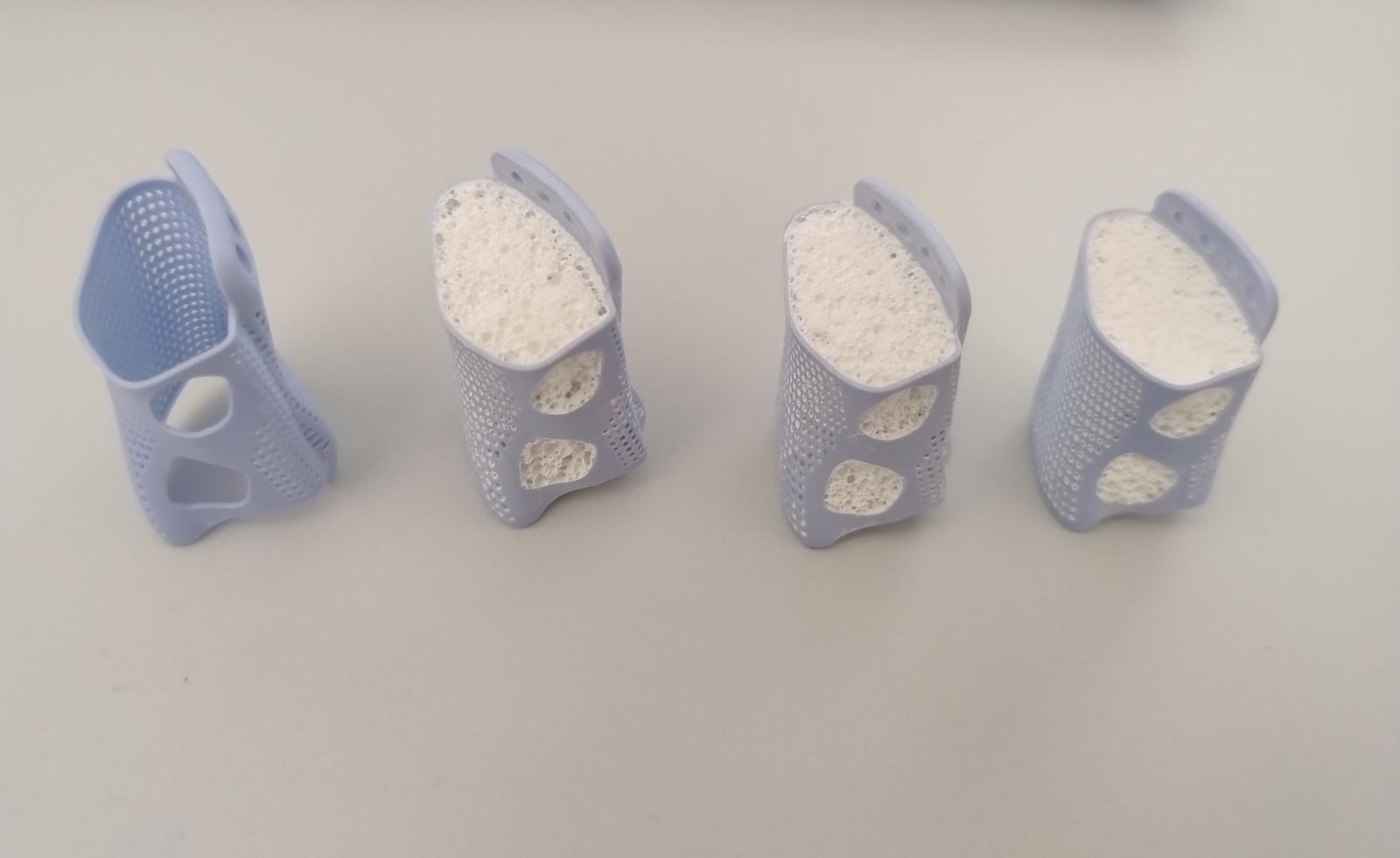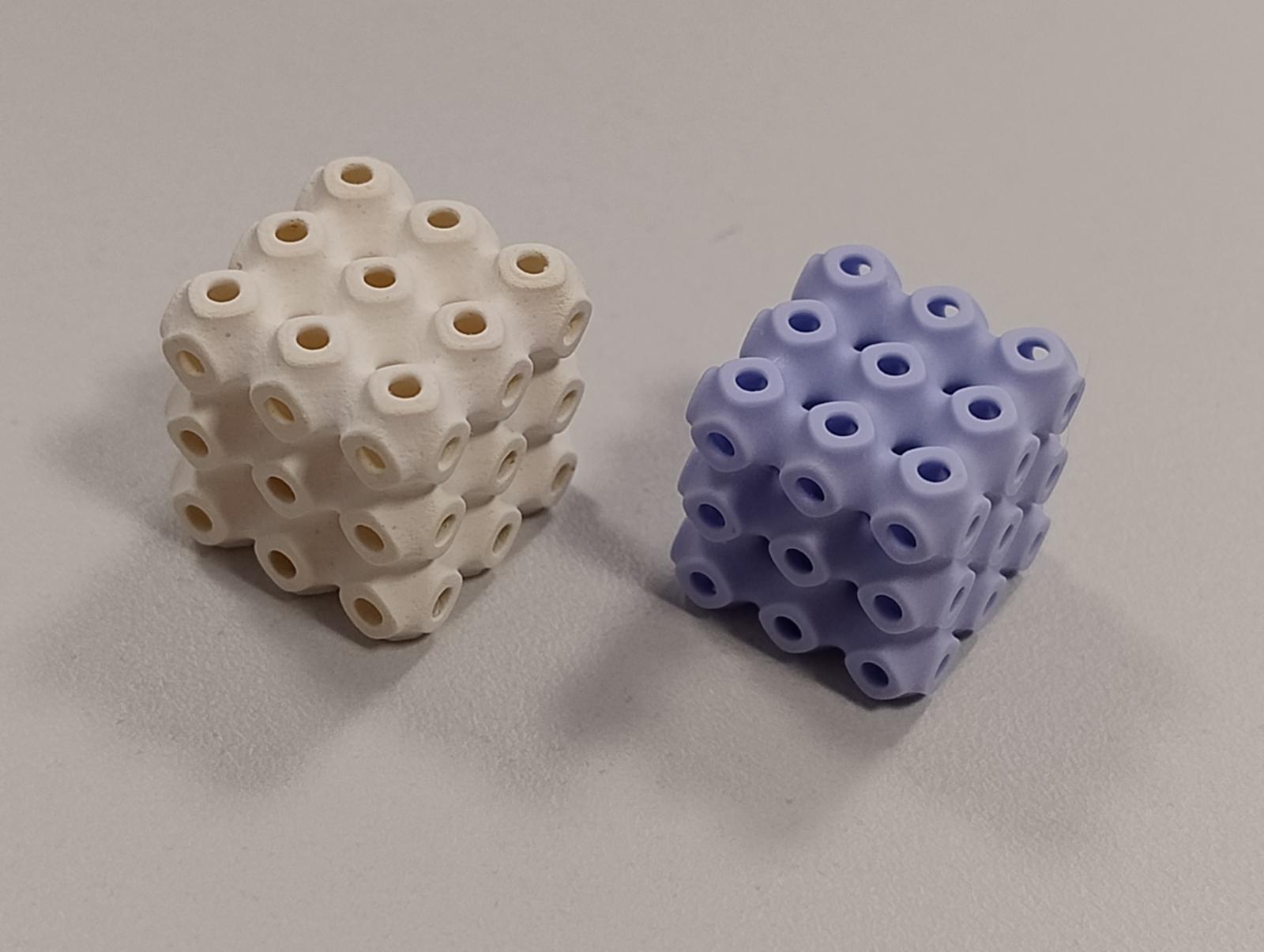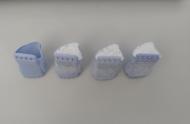Ideas and discoveries
Breakthrough “muscle” actuator: CEITEC BUT researchers receive prestigious EU grant as the only Czech coordinators

The High-Performance Materials and Coatings for Industry research group at CEITEC BUT has been awarded a prestigious grant under the EIC Pathfinder Open program. This European program is focused on supporting research and innovation in new technologies and approaches that can have a significant impact on the market and society. Out of 1,110 project proposals, the commission selected only 45, making the overall success rate just 4 %. Within the grant, Edgar B. Montufar will lead the ambitious international project BiCeps as the only Czech coordinator, aiming to create a new type of actuator through additive manufacturing that mimics natural muscle movement.
An actuator is a device that converts energy into motion or mechanical work. It is used to control various systems and processes in industrial applications, automation, robotics, and many other fields. Actuators play a crucial role in many systems—from simple devices like electric doors to more complex applications such as robotic arms or automated production lines. “Our goal is to create actuators that can stretch and contract like muscles, using additive manufacturing techniques that simplify traditional manufacturing processes. This approach opens new possibilities for applications currently reliant on complex motor systems,” explains Edgar Montufar.
The reason why the commission selected this proposal from 1,110 project submissions lies in the innovative idea, according to Edgar. “Motors and drive systems are everywhere, as is additive manufacturing. But to use additive manufacturing to create something that isn’t a motor yet can generate movement in a different way is a unique concept,” he explains.

Funding from the Pathfinder program will allow the team to explore cutting-edge technologies in additive manufacturing and push the boundaries of current possibilities. The project brings together an international consortium of partners from the Czech Republic, Slovakia, and Austria. The participating universities include CEITEC BUT, Czech Technical University in Prague, and FunGlass Centre at Alexander Dubček University of Trenčín, while the corporate partners are the Austrian company Lithoz and the Pilsen-based COMTES FHT. “This project has the potential to revolutionize the way movement is achieved in many devices, making them more efficient and precise,” says the scientist. The aim is not only research but also practical implementation in the industry, with the consortium comprising partners who can commercialize and introduce the technology into production in the future.
The shape of the technology is still unknown
The concept is so innovative that the research team does not yet know what the final technology will look like. “We have proposed a concept based on previous knowledge, but details like how large it will be or what the final shape will be depend on how much force will be needed. It could be very small devices that, for example, change the orientation of micro-panels, or larger applications such as pipes that can transport liquids without the need for conventional pumps,” he adds.
Although the project does not focus on the energy source, the researchers plan to explore ecological and sustainable options in follow-up grants. In the future, this could involve the use of renewable sources or alternative methods of energy generation without the need for batteries. Great emphasis is also placed on the recyclability and reuse of materials at the end of the actuator’s lifecycle.

Wide range of applications
In general, the researchers aim to demonstrate that it is possible to create a motion generation mechanism using additive manufacturing and to determine what force or speed it can achieve. In the future, the technology could be utilized in various fields—from industry to homes or transportation. For instance, even a camera that needs to rotate could use this system instead of a motor. The scientists also see potential applications in medicine, such as in the development of more precise instruments that could replace traditional motors in medical devices or in smart homes.
In summary, the BiCeps project represents a significant step forward in engineering and innovation. With EU support, BiCeps’s team has a chance to bring about fundamental changes in the design of actuators that could transform sectors reliant on movement technologies. “The project starts in the spring of next year, but we are already excited and looking forward to showcasing our progress to the world,” concludes Edgar.
Source: CEITEC BUT
“I expected chaos, dirt and mess,“ says a researcher from CEITEC BUT who taught children in the Himalayas
Scanning zebrafish for microplastics: Micro-CT as a non-destructive way to image microplastics in biological samples
From Prosecco to Bioplastics: An Italian Scientist's Journey to Sustainable Innovations
A lack of hay for horses inspired Joes Jančář to create a smart nutrition for plants
A priceless offer. CEITEC will help researchers to bring the results of their work to the market
